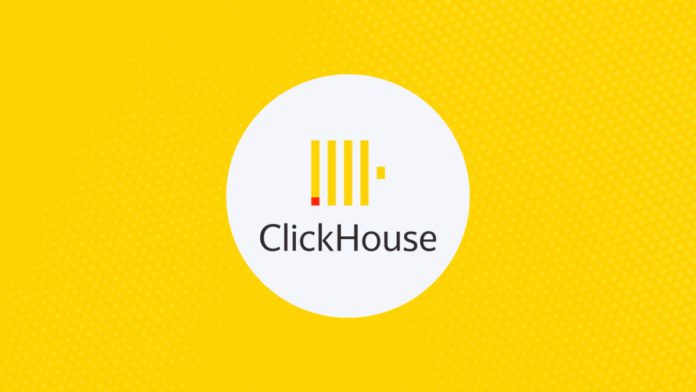Data creation and consumption have increased tremendously in recent years. According to a Statista report, global data creation will exceed 394 zettabytes by 2028. Organizations must have access to an efficient database to store and manage large volumes of data. ClickHouse stands out among the available databases due to its durable architecture, which supports effective data storage and querying.
Let’s learn about ClickHouse in detail, along with its advantages and disadvantages. By weighing the pros and cons, you can decide how you want to utilize ClickHouse for your enterprise workflow operations.
What Is ClickHouse?
ClickHouse is an open-source columnar database management system that you can use for online analytical processing (OLAP) transactions. OLAP is an approach to perform complex queries and multidimensional analysis on large-volume datasets.
Using ClickHouse, you can execute SQL-based data analytics queries. This involves using standard SQL commands to apply conditions, join tables, and transform data points. With the help of these operations, you can query structured, semi-structured, and unstructured data in ClickHouse. It is used extensively for real-time analytics, data warehousing, and business intelligence applications.
Architecture
The architecture of ClickHouse consists of two prominent layers: the query processing layer and the storage layer. Its query processing layer facilitates efficient query execution. On the other hand, the storage layer enables you to save, load, and maintain data in tables.
The ClickHouse table consists of multiple sections called parts. Whenever you insert data into the table, you create a part. A query is always executed against all the parts existing at that time. To prevent excessive fragmentation, ClickHouse offers a merge operation. It runs in the background and allows you to combine multiple smaller parts into larger ones.
By ensuring SELECT queries are isolated from INSERT operations, you can prevent query performance degradation.
To utilize the database for data storage, you can extract data from multiple sources and load it into ClickHouse. It supports a pull-based data integration method in which the database allows you to send requests to the external source data system to retrieve data.
You can access 50+ integration table functions and storage engines while using ClickHouse. This facilitates enhanced connectivity with external storage systems, including ODBC, MySQL, Apache Kafka, and Redis.
To evaluate the ClickHouse database performance, you can leverage the built-in performance analysis tools. Some of the options include server and query metrics, a sampling profiler, OpenTelemetry, and EXPLAIN queries.
Key Features of ClickHouse
As a high-performing database, ClickHouse offers remarkable capabilities. Let’s look at some of its features in detail:
Columnar Storage
ClickHouse uses a columnar storage architecture, allowing data storage and retrieval by columns instead of rows. While reading data from a columnar database, you only need to read the relevant data records.
For example, look at the table in the above image. Suppose you want to extract the date of birth of all the users. In row-based storage, you need to read all the rows, even if you just want the data point from the last column. On the other hand, in columnar storage, you only need to read the data points from the last column.
By facilitating column-oriented storage, ClickHouse allows faster query execution for near real-time analytics, big data processing, and data warehousing.
Data Compression
You can store data in the ClickHouse database in a compressed format due to its columnar storage feature. When you merge adjacent parts in ClickHouse tables, the data is more compressible. You can also utilize algorithms like ZSTD to optimize compression ratios.
Other factors that affect the data compression in ClickHouse include ordering keys, data types, and codec selection. Codecs are hardware components or software programs that help you to compress and decompress large volumes of digital data such as audio or video files. This enables you to manage unstructured data effectively while using ClickHouse.
Vectorized Query Processing
Clickhouse consists of a vectorized query processing engine that facilitates parallel query execution. In this process, you can query data in batches, called vectors, in the CPU cache, reducing data overhead.
Vector query processing also includes the execution of Single Instructions, Multiple Data (SIMD) operations. It involves the processing of multiple data points simultaneously in a single CPU instruction.
With the help of SIMD operations, you can minimize the number of CPU cycles per row required to process data. By leveraging SIMD and vector query processing in ClickHouse, you can optimize the usage of memory resources and carry out faster data operations.
Automatic Scaling
The Scale and Enterprise editions of ClickHouse support vertical and horizontal scaling.
You can vertically auto-scale the ClickHouse database by adjusting the CPU and memory resources. The process of auto-scaling involves monitoring and automatic adjustment of computational resources according to the incoming data load. On the other hand, for horizontal scaling, you need to opt for the manual technique of adjusting the number of replicas of your ClickHouse cloud console.
Currently, you can perform vertical auto-scaling and manual horizontal scaling in the Scale tier. On the other hand, the Enterprise edition supports manual horizontal scaling and vertical auto-scaling only for standard profiles. For custom Enterprise plans, you cannot conduct vertical auto-scaling and manual vertical scaling at launch. To avail of these services, you must contact ClickHouse support.
Advantages of ClickHouse Database
ClickHouse is a popular database that offers some notable benefits. A few of these are as follows:
Optimized Data Storage
The columnar storage and compression algorithms allow you to store high-scale data efficiently in ClickHouse. You can also store data remotely in storage systems like Amazon S3 or Azure Blob Storage using MergeTree and Log family table engines. These engines are designed to facilitate reliable data storage through partitioning and compression techniques.
Higher Query Performance
You can retrieve the data stored in ClickHouse using simple SELECT commands. The vector query execution further enhances the query performance. Such capabilities enable you to handle large datasets efficiently with optimal resource usage.
AI and Machine Learning Capabilities
You can explore and prepare data stored in ClickHouse to train machine learning models. Due to ClickHouse’s support for vector search operations and different data types, including unstructured data, you can integrate it with LLMs. This assists in retrieving contextually accurate responses from LLMs. As a result, you can utilize the ClickHouse database for AI-driven analytics and real-time decision-making.
Cost Effective
Apart from the open-source version, ClickHouse offers secure and fast cloud services through the ClickHouse Cloud edition. It has a pay-as-you-go pricing model wherein you only have to pay for the resources you use.
Another paid option is Bring Your Own Cloud (BYOC). Here, you can deploy ClickHouse on cloud service providers such as AWS, Microsoft Azure, and GCP. It is suitable for large-scale workloads. The cloud versions are classified as Basic, Scale, and Enterprise, with separate costs for data storage and compute. With numerous deployment options, you can choose any one that suits your organizational needs and budget.
Disadvantages of Using ClickHouse
Despite offering several advantages, ClickHouse has some limitations, such as:
Limited Functionality
ClickHouse does not offer a vast set of tools or extensions, making it an underdeveloped data system compared to conventional databases like PostgreSQL. It also has fewer built-in functions for complex transactional processing. As ClickHouse is optimized for analytics, it is less useful for general-purpose applications.
Complexity of Table Joins
Table joins are essential for comprehensive data analytics. However, these operations are complex and can affect query performance. To avoid joins, ClickHouse supports a data denormalization technique that involves the retention of duplicates and redundant data. This speeds up read operations but delays write operations as updates require modifying multiple duplicate records.
Steep Learning Curve
You may find it challenging to use ClickHouse if you are a beginner-level database user, mainly because understanding its features is difficult. You will require some time to gain expertise on its unique query execution model, complex optimizations, and configurations. Even experienced SQL users will need to gain specialized knowledge to work with ClickHouse. This increases the onboarding time and results in latency in downstream enterprise operations.
Use Cases
ClickHouse’s versatility makes it a good choice for several use cases. Some of the sectors you can use ClickHouse are as follows:
E-commerce
You can use ClickHouse to monitor e-commerce website traffic. It helps you store user behavior data, such as search queries, product clicks, and purchases. You can analyze this data to increase conversion and minimize churn rates.
Finance
In finance, you can use ClickHouse DB to store and analyze stock market data. From the data stored in ClickHouse, you can find the highest trade volume per stock through querying. ClickHouse also facilitates identifying anomalous financial transactions based on historical data to detect fraudulent activities.
Advertising and Marketing
You can utilize ClickHouse to analyze the performance of advertising campaigns in real-time. It simplifies the tracking and storage of data, such as ad impressions and clicks. By integrating this data with customer demographics and behavior, you can conduct an in-depth analysis. Based on the insights generated, you can frame a targeted marketing strategy.
Conclusion
ClickHouse database has become popular due to its effective data storage and processing capabilities. This guide gives you a comprehensive overview of ClickHouse, its architecture, and its features. Based on these parameters, you can understand the advantages and disadvantages of leveraging ClickHouse for your specific use case. The versatility of ClickHouse makes it useful in various sectors, including e-commerce, finance, and advertising.
FAQs
Can you use ClickHouse as a Time Series Database?
Yes, you can use ClickHouse as a time series database. It offers diverse features to support time series analysis. First is codecs that enable compression and decompression of data for quick retrieval of large volumes of data for complex time-based analysis. Second, ClickHouse allows you to use a time-to-live (TTL) clause. It facilitates the storage of newer data on fast drives and moves it gradually to slower drives as the data gets old.
How can you concurrently access data in ClickHouse?
To access data concurrently in ClickHouse, you can utilize multi-versioning. It involves creating multiple copies of a data table so that you and your team can effectively perform read and write operations simultaneously without interruptions.


